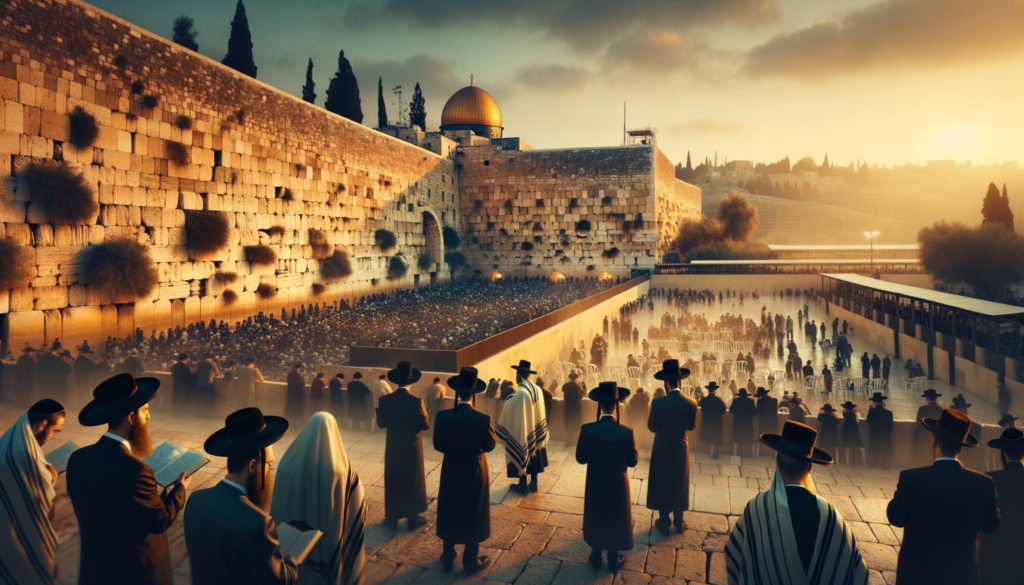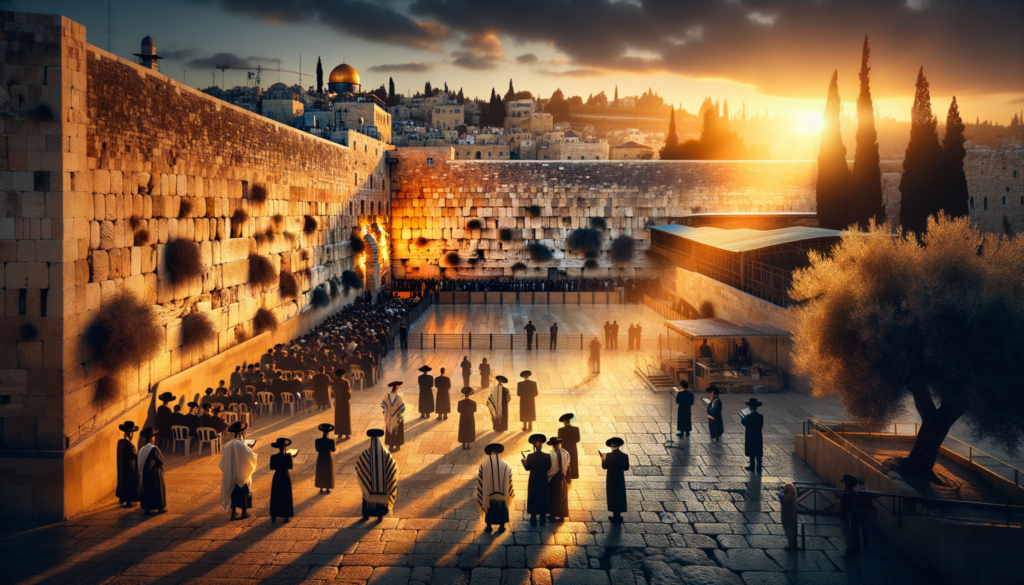The Wailing Wall: A Timeless Symbol of Faith and Heritage

In the heart of Jerusalem’s Old City stands a monument of immense emotional and historical weight: the Wailing Wall. Known in Hebrew as the ‘Kotel HaMa’aravi’ (the Western Wall), this ancient limestone structure is far more than a relic of the past. It is a symbol of endurance, a place of heartfelt prayer, and a tangible link to millennia of Jewish heritage. For people around the world, it represents an unbreakable bond with the history of Israel. This article will explore the deep history of the Wall, its true connection to the biblical narrative of the Tanakh, and the beautiful traditions that make it one of the most significant sites in the world.
The Historical Origins of the Western Wall
To understand the Wailing Wall, we must look back to the time of King Herod. The Wall we see today was part of a massive renovation and expansion of the Temple Mount, the site of the Second Temple, completed around 19 BCE. It was not a wall of the Temple itself, but rather the western retaining wall of the vast plaza that surrounded it. Its purpose was to support the enormous platform on which the Temple stood. When Roman legions destroyed the Second Temple in 70 CE, this retaining wall was one of the few major structures left standing. Its survival through centuries of upheaval has made it the most revered remnant of that sacred site.
The Wall’s Connection to the Bible
A common question is whether the Wailing Wall is mentioned in the Bible. The structure itself is not named in the Tanakh because it was constructed long after most of the texts were written. However, its profound significance comes directly from the biblical site it encloses: the Temple Mount (Mount Moriah). This was the location of both the First Temple, built by King Solomon, and the Second Temple, both central to the biblical narrative. The Western Wall is the closest accessible point for prayer to the location of the Holy of Holies, the innermost sanctuary of the Temple. Its biblical connection lies not in its name, but in its function as the last standing remnant of the platform that carried the spiritual heart of the Jewish nation.
A Place of Prayer: Traditions and Meaning
The name ‘Wailing Wall’ was given by non-Jewish observers who witnessed the sorrowful prayers of Jews mourning the destruction of the Temple. Today, while it remains a place of mourning, it is more commonly and affectionately called the Western Wall or simply the ‘Kotel.’ It is a vibrant site filled with prayer, celebration, and quiet contemplation. One of the most touching traditions is the placing of small, handwritten notes with prayers and personal wishes into the cracks of the Wall. Millions of these notes are left each year, turning the ancient structure into a living repository of human hopes and dreams.
Engineering and Archaeology: Secrets Beneath the Stones
The Wall is built of massive limestone blocks, some weighing hundreds of tons. These stones were cut with astonishing precision and set without mortar. Archaeologists have uncovered much more than what is visible today. The Western Wall Tunnels reveal sections of the Wall hidden beneath centuries of debris, including the enormous Western Stone, estimated at 570 tons. These discoveries highlight not only the engineering genius of antiquity but also the continuity of Jewish presence and reverence for the site across two millennia.
The Wall Through the Ages
After the destruction of the Temple in 70 CE, Jews continued to gather at the Wall as the closest point to the Holy of Holies. During the Byzantine and early Muslim periods, access was limited but never fully denied. In the Ottoman era, the Wall became firmly established as a Jewish prayer site, though confined to a narrow alley. Under the British Mandate (1917–1948), tensions often flared over access and rights. Between 1948 and 1967, when the Old City was under Jordanian control, Jews were barred entirely. After the Six-Day War in 1967, the Wall returned to Jewish hands, and the surrounding area was cleared to create the large plaza we see today.
Modern Significance and National Symbol
Today, the Western Wall serves as both a personal and national symbol. Individuals come to whisper prayers, soldiers are sworn in during moving ceremonies, and Jewish holidays like Tisha B’Av and Sukkot see thousands gathering at the site. It is a place where history and living tradition meet, embodying resilience, unity, and hope. For millions of visitors—Jewish and non-Jewish alike—touching its stones is a profound experience, linking them to centuries of faith and memory.




